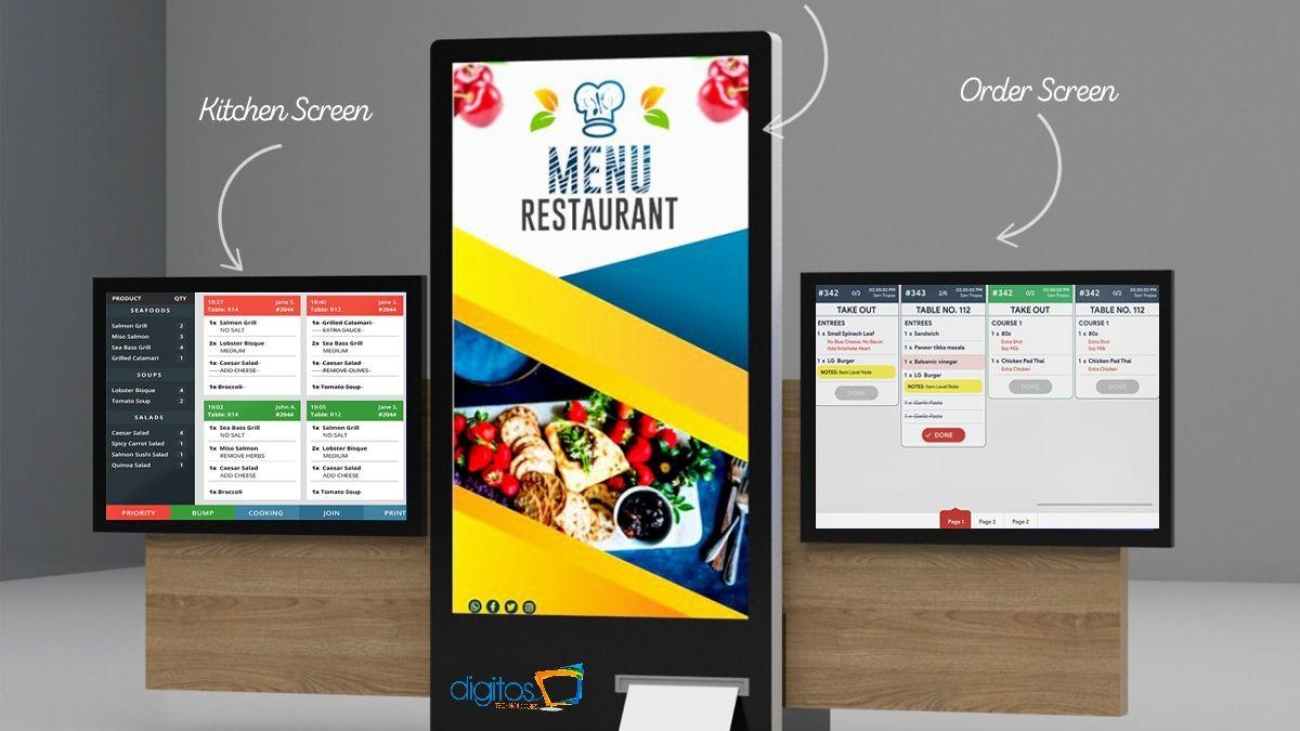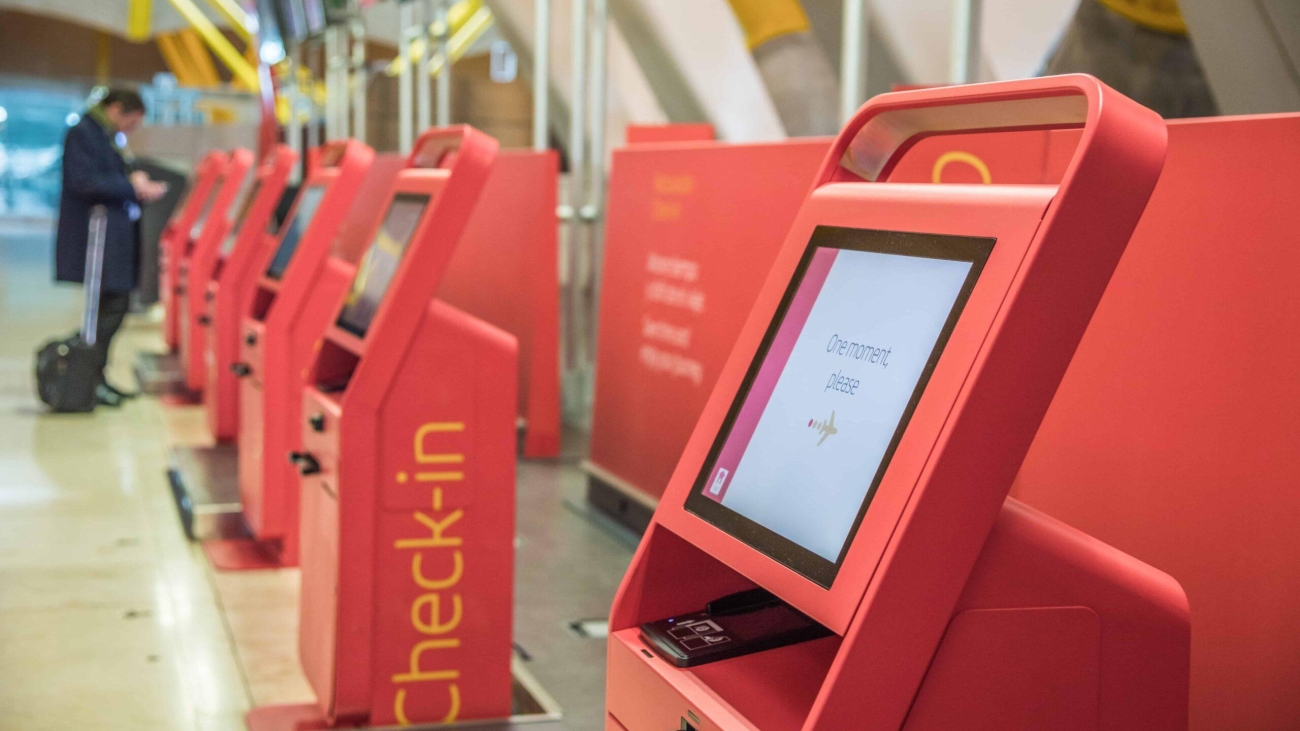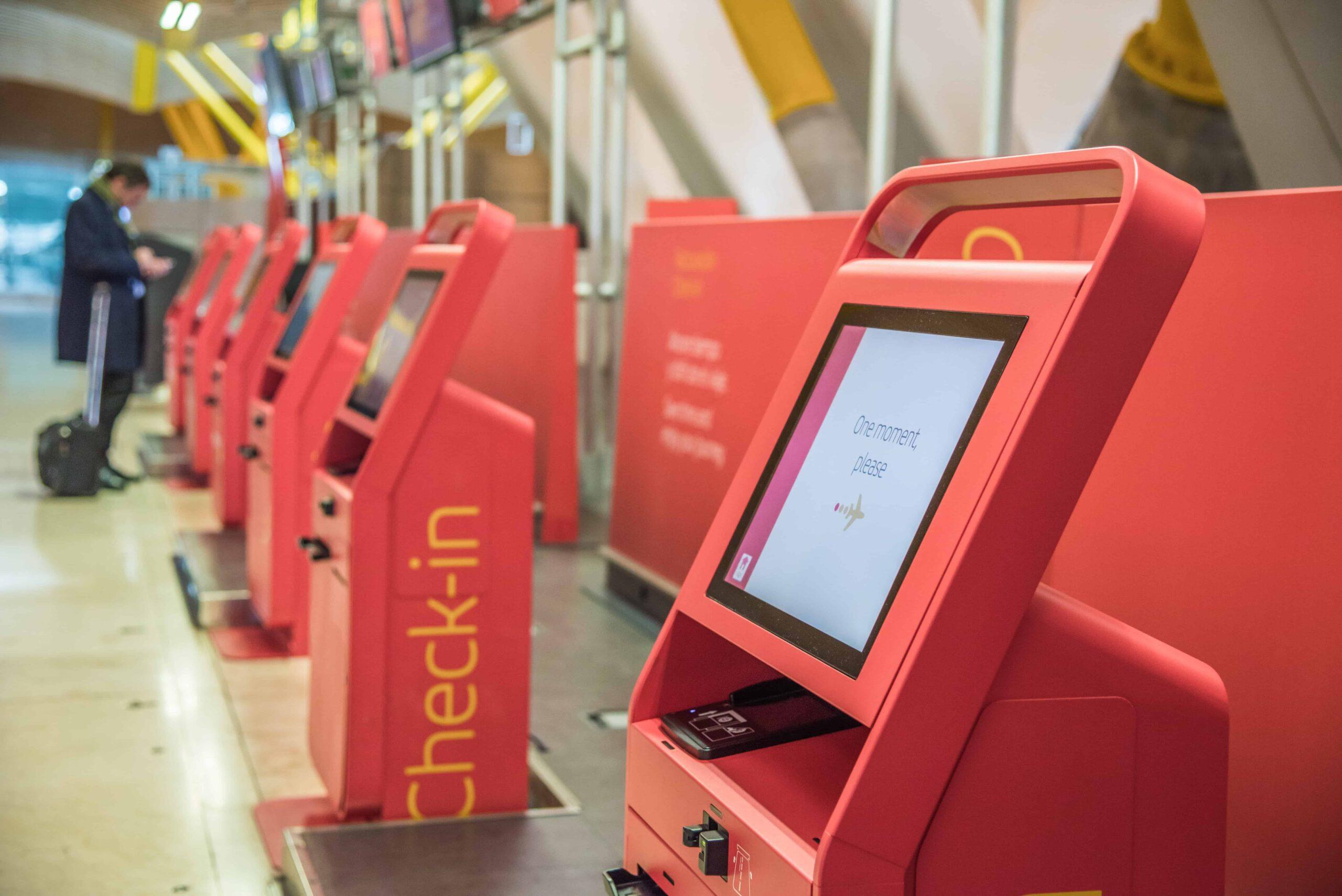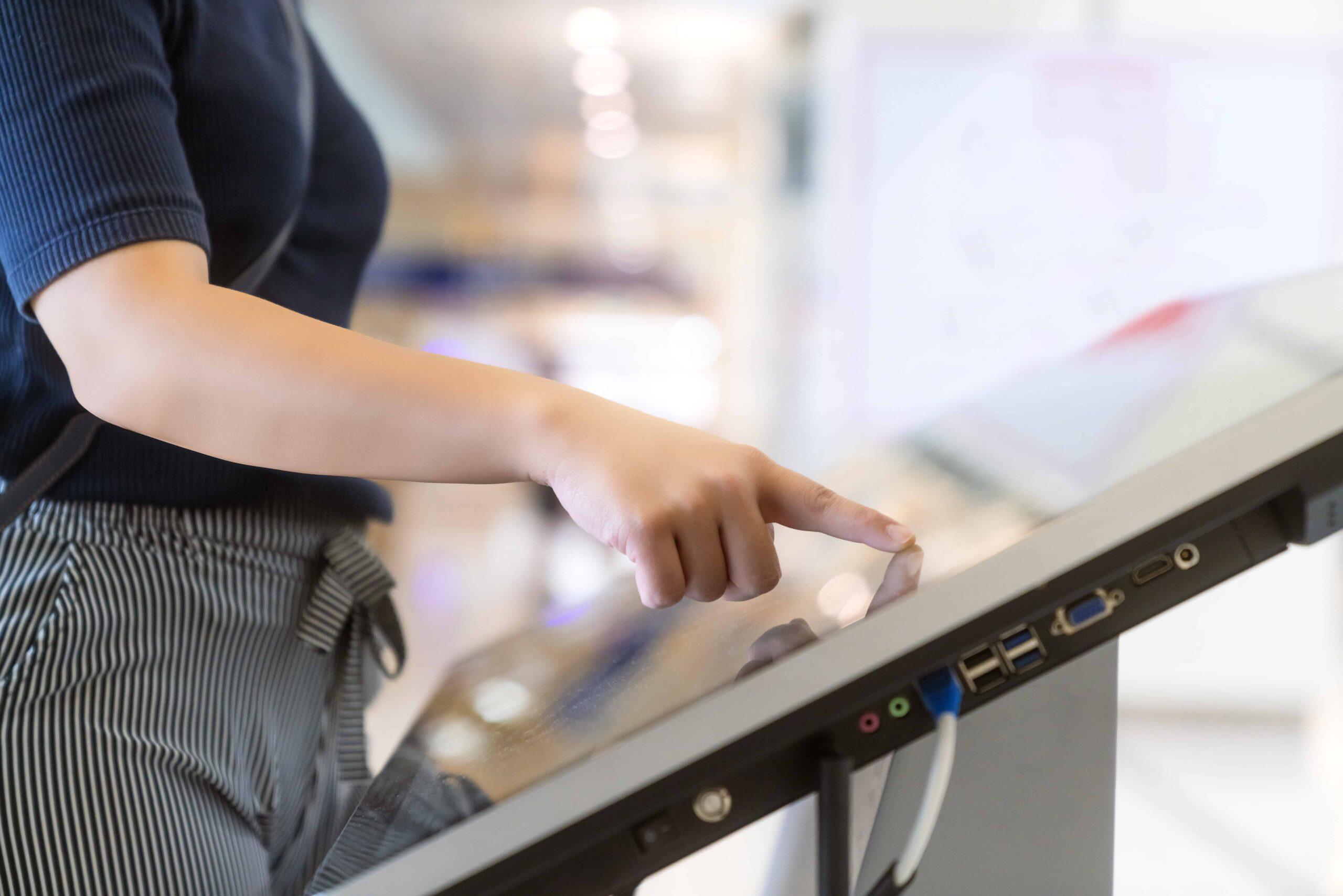
Digitos DM
- Digitos DM
- December 26, 2023
- 5 months ago
Self-ordering kiosks have become a ubiquitous presence in the modern restaurant landscape, ushering in a new era of efficiency and customer satisfaction. As technology continues to evolve, the integration of self-ordering kiosks has become a strategic move for restaurants seeking to enhance their operations and elevate the overall dining experience.
Introduction
Brief Definition of Self-Ordering Kiosk
In its essence, a self-ordering kiosk is a touch-screen device that allows customers to browse the menu, place their orders, and make payments without the need for human interaction. This technology has gained traction, particularly in the fast-food and casual dining sectors.
The Rise of Technology in Restaurants
The hospitality industry has witnessed a paradigm shift with the infusion of technology. From online reservations to digital menus, restaurants are embracing innovation to meet the evolving expectations of their patrons.
Benefits of Self-Ordering Kiosks
Improved Efficiency
One of the primary advantages of self-ordering kiosks is the significant boost in operational efficiency. Orders are processed swiftly, reducing wait times and improving overall service speed.
Enhanced Customer Experience
Customers appreciate the convenience of browsing the menu at their own pace, customizing orders to their preferences, and avoiding queues. This autonomy contributes to an enhanced dining experience.
Order Accuracy
With self-ordering kiosks, the likelihood of order errors is drastically reduced. Customers can review their selections before finalizing, minimizing misunderstandings and improving overall order accuracy.
Implementation in the Restaurant Industry
Early Adopters
Leading restaurants have been quick to adopt self-ordering kiosks. The transition, however, has not been without challenges, as establishments grapple with integration complexities and staff training.
Integration Challenges
The implementation of self-ordering kiosks requires seamless integration with existing point-of-sale systems, kitchen operations, and other essential restaurant functions. Overcoming these challenges is crucial for a successful deployment.
Success Stories
Despite initial challenges, many restaurants have reported positive outcomes after adopting self-ordering kiosks. Increased efficiency, higher order accuracy, and improved customer satisfaction are common success indicators.
Customization Options
Tailoring Orders to Preferences
Self-ordering kiosks empower customers to customize their orders, catering to individual preferences. This level of personalization contributes to customer loyalty and satisfaction.
Allergen Considerations
The kiosks also facilitate allergen awareness by allowing customers to easily identify and avoid ingredients they may be allergic to. This feature is particularly beneficial in today’s diverse and health-conscious society.
Cost Considerations
Initial Investment
While the initial investment in self-ordering kiosks may seem substantial, the long-term benefits often outweigh the costs. The efficiency gains and potential for increased sales contribute to a positive return on investment.
Long-term Savings
Restaurants can realize long-term savings through reduced labor costs and improved resource utilization. Self-ordering kiosks streamline the ordering process, allowing staff to focus on other aspects of customer service.
Overcoming Customer Resistance
Education and Training
Customer resistance can be mitigated through effective education and training programs. Restaurants must invest in educating customers about the benefits of self-ordering kiosks and provide assistance as needed.
Addressing Privacy Concerns
Some customers may express concerns about privacy when using self-ordering kiosks. Implementing transparent privacy policies and security measures can help alleviate these concerns.
Future Trends
Integration with Mobile Apps
The future of self-ordering kiosks lies in seamless integration with mobile apps. Restaurants are exploring ways to enhance the customer journey by allowing orders to be placed and paid for through dedicated mobile applications.
Artificial Intelligence in Self-Ordering Kiosks
Artificial intelligence is poised to play a significant role in the evolution of self-ordering kiosks. Predictive analytics and machine learning algorithms can optimize menu recommendations and further personalize the customer experience.
Case Studies
Notable Restaurants Embracing the Technology
Several renowned restaurants have successfully integrated self-ordering kiosks. These case studies highlight the positive impact on sales, customer satisfaction, and overall operational efficiency.
Positive Impact on Sales and Customer Satisfaction
Restaurants that have embraced self-ordering kiosks report an increase in sales revenue and heightened levels of customer satisfaction. The convenience and speed of the ordering process contribute to positive dining experiences.
Challenges and Solutions
Technical Glitches
While technical glitches can occur, proactive maintenance and prompt resolution of issues are essential. Restaurants must have contingency plans in place to address technical challenges swiftly and minimize disruptions.
Maintenance Issues
Regular maintenance is crucial to ensure the seamless functioning of self-ordering kiosks. Establishing routine inspection schedules and partnering with reliable service providers can address potential maintenance issues.
Comparisons with Traditional Ordering
Speed and Efficiency
The comparison between self-ordering kiosks and traditional ordering methods reveals a significant difference in speed and efficiency. Kiosks outperform traditional methods, particularly during peak hours.
Human Interaction and Personal Touch
While self-ordering kiosks offer efficiency, some argue that they lack the personal touch that comes with human interaction. Traditional ordering allows customers to engage with staff, seek recommendations, and enjoy a more personalized service. Striking a balance between efficiency and maintaining a personal touch becomes crucial for restaurants implementing self-ordering kiosks.
Global Adoption
Self-Ordering Kiosks Worldwide
The adoption of self-ordering kiosks is not confined to specific regions. Restaurants worldwide are recognizing the benefits and embracing this technology to stay competitive and meet evolving consumer expectations.
Cultural Adaptations
Different cultures may respond differently to self-ordering kiosks. Some cultures may prioritize the convenience and speed offered by the technology, while others may place a higher value on traditional, interpersonal interactions. Understanding and adapting to cultural nuances is essential for global success.
Sustainability in the Restaurant Industry
Reduced Paper Waste
One environmentally friendly aspect of self-ordering kiosks is the reduction in paper usage. Digital menus and receipts contribute to minimizing paper waste, aligning with the growing emphasis on sustainability in the restaurant industry.
Energy-Efficient Technologies
Restaurants are exploring energy-efficient self-ordering kiosk models, incorporating technologies that reduce energy consumption. This move towards sustainability aligns with the broader industry trend of environmentally conscious practices.
Security Measures
Protecting Customer Data
Ensuring the security of customer data is a paramount concern when implementing self-ordering kiosks. Robust encryption, secure payment gateways, and adherence to data protection regulations are essential to maintain customer trust.
Fraud Prevention
Restaurants must implement measures to prevent fraud, such as unauthorized access or payment-related issues. Continuous monitoring and updates to security protocols are critical to safeguard both the restaurant and its patrons.
Feedback Mechanism
Gathering Customer Insights
Self-ordering kiosks provide an invaluable source of customer data and feedback. Restaurants can leverage this information to understand customer preferences, track popular menu items, and continuously refine their offerings.
Continuous Improvement
Acting on customer feedback is crucial for the ongoing success of self-ordering kiosks. Regularly analyzing data, identifying areas for improvement, and implementing changes contribute to a dynamic and responsive dining experience.
Conclusion
In conclusion, the integration of self-ordering kiosks in the restaurant industry represents a transformative leap towards efficiency, customer satisfaction, and sustainability. While challenges exist, the benefits of streamlined operations, improved accuracy, and positive customer experiences position self-ordering kiosks as a valuable investment for restaurants looking to thrive in the digital age.

























